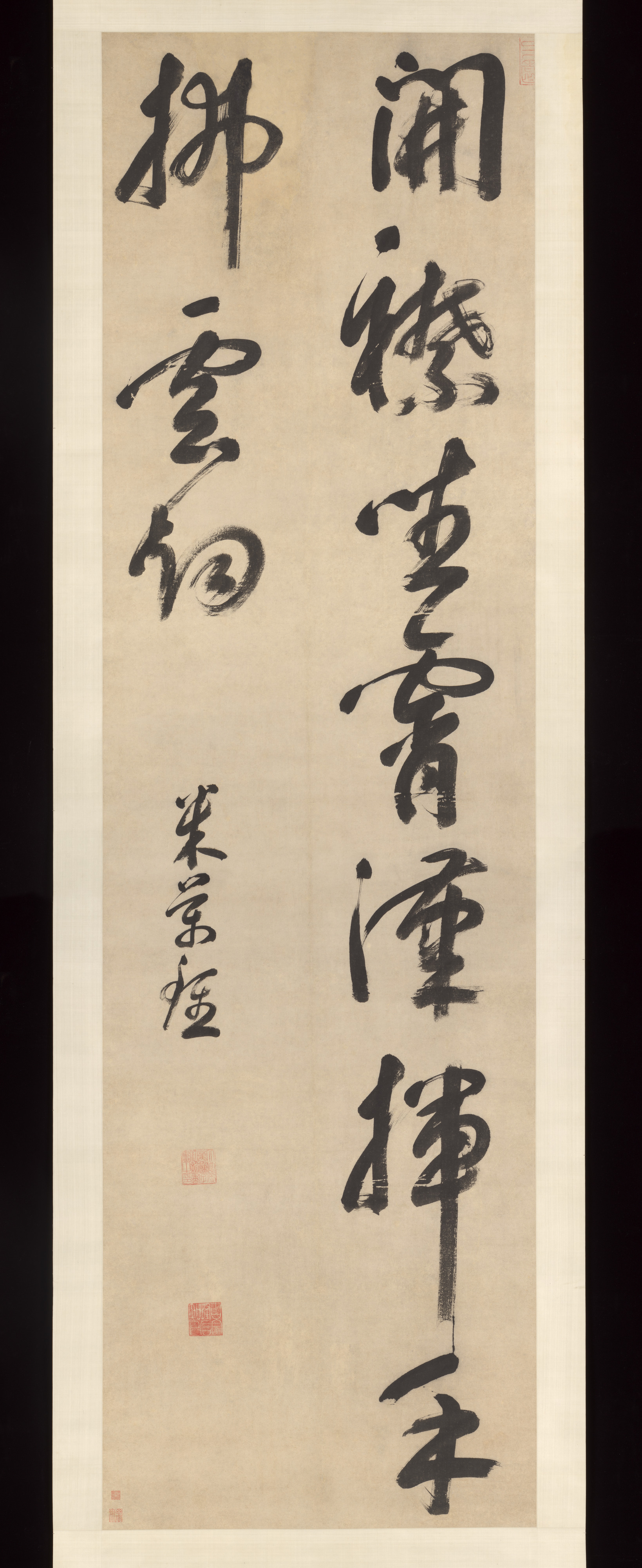Couplet from Song Zhiwen’s poem “Ascending the Pavilion at the Monastery of Meditative Concentration”
Attributed to Mi Wanzhong Chinese
Mi Wanzhong was a well-known calligrapher, painter, and connoisseur of the late Ming period who claimed descent from the eminent Northern Song artist-connoisseur Mi Fu (1052–1107). While holding the post of judicial inspector in Nanjing, Mi Wanzhong fell afoul of the notorious palace eunuch Wei Zhongxian (1568–1627) and was forced to retire to his garden estate on the outskirts of Beijing in 1625. During his retirement, he whiled away the time indulging in artistic pursuits, including painting scenes of his garden on lanterns that came to be known as "Mi family lanterns." It was not until 1631, four years after the eunuch's death, that Mi was reappointed to government service. Moyai (monumental writing carved into cliffs) became a special art in north China during the sixth century. Here Mi Wanzhong combined the large scale of moyai with the powerful brush style of the Tang master Yan Zhenching (709–785). The couplet reads:
Opening my robes, I sit at the edge of heaven,
With a wave of my hand, I brush away the
clouds and smoke.
As a scholar-official forced out of office by a corrupt palace eunuch, Mi must have enjoyed writing these brave words in such a bold manner.
Due to rights restrictions, this image cannot be enlarged, viewed at full screen, or downloaded.
This artwork is meant to be viewed from right to left. Scroll left to view more.



